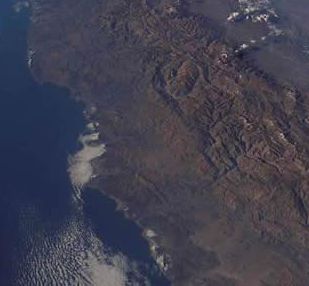This photo, taken from space, shows the Southeast Pacific Ocean on the left, with patches of stratocumulus clouds along the coast of South American. Moving to the right (east) one can see the low lying coastal Atacama Desert and the Andes Mountain Range.
Click on image for full size
Image Courtesy of NASA
What are VOCALS' scientific questions?
Scientists in the VOCALS program seek to better understand the climate in the Southeast Pacific (SEP) Ocean region and the global climate system. The scientists wonder how changes in the oceans impact the characteristics of the lower atmosphere and the clouds that are found there. They also seek to understand how the oceans affect the clouds and atmosphere.
Scientific questions can be answered by doing experiments in the field as well as in the laboratory. The VOCALS scientists are focused on two general goals: (1) testing how precipitation known as know as drizzle affects the structure and coverage of stratus clouds. (This question includes understanding how aerosols, sometimes in air pollution, affect how the precipitation forms), and (2) testing how the ocean, atmosphere, and land interact with each other in the SEP region.
In addition to exploring these questions, the VOCALS observations will be used to find out how accurate satellite
observations are of the region. This is done by comparing satellite data collected miles above Earth with measurements made by instruments on ships, on airplanes, and at stations on land. Scientists will then be able to explore how well their models of interactions in the atmosphere and oceans represent the weather and climate in the region. This is very important to understanding what role the SEP plays in the larger global climate system.
You might also be interested in:
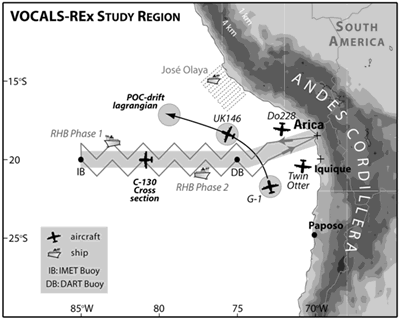
Long after the VOCALS campaign is completed, the scientists’ work will continue. They must process, review, and study the data to determine what has been learned. Many model runs will be made and analyzed.
...more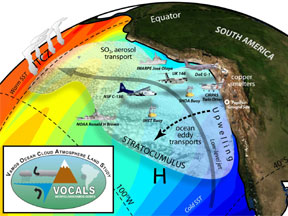
How big of a 'laboratory' would you need to conduct experiments on a climate system? Well, that probably depends on which part of Earth's climate system you want to study. In the case of the VOCALS, the
...more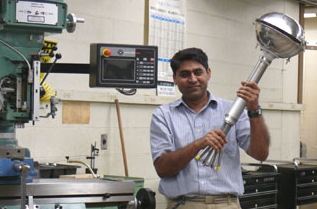
Before we leave to carry out field work, there's much that needs to be done in preparation. There are many challenges involved with setting up a measurement site in a remote environment. Questions we have
...more
The Chilean men's soccer team beat Argentina in a World Cup qualifying game this evening, 1-0. This is the scene that greeted our eyes in the Arica town square - a lot of hooting, a lot of Chilean flags.
...more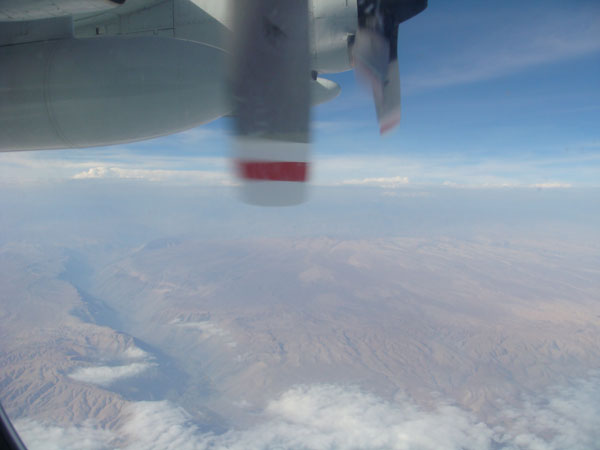
Hi: Greetings from the field site in Arica! I arrived on October 13th, having flown down on the Lockheed C-130 aircraft. It took us three days of travel from Denver, Colorado in the United States. The
...more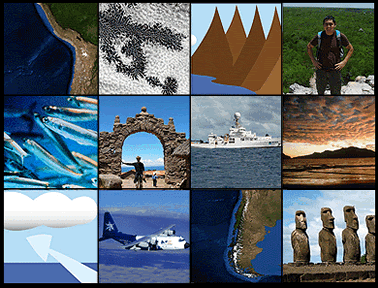
What if you wanted to learn more about the climate system of a very large area such as the Southeast Pacific Ocean? What would be involved in studying how the oceans, land, and atmosphere interact? You
...more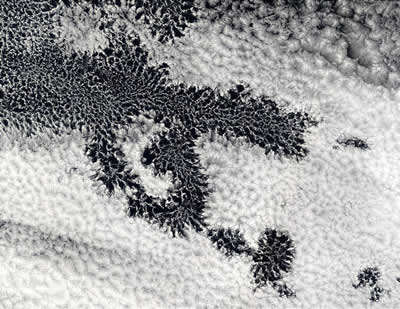
Many types of data from satellites are used throughout the VOCALS field campaign. Satellite observations complement data gathered from airplanes and ships to provide a more detailed overall picture of
...more


